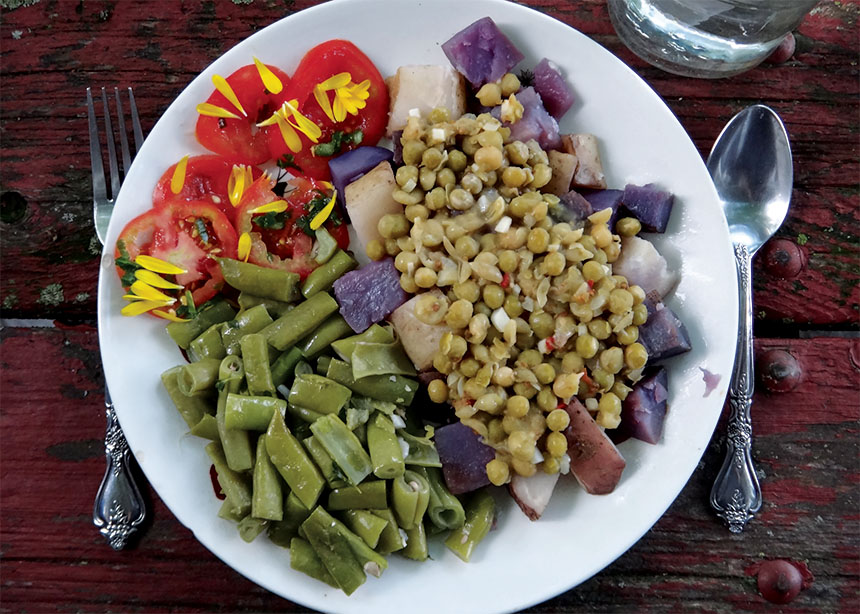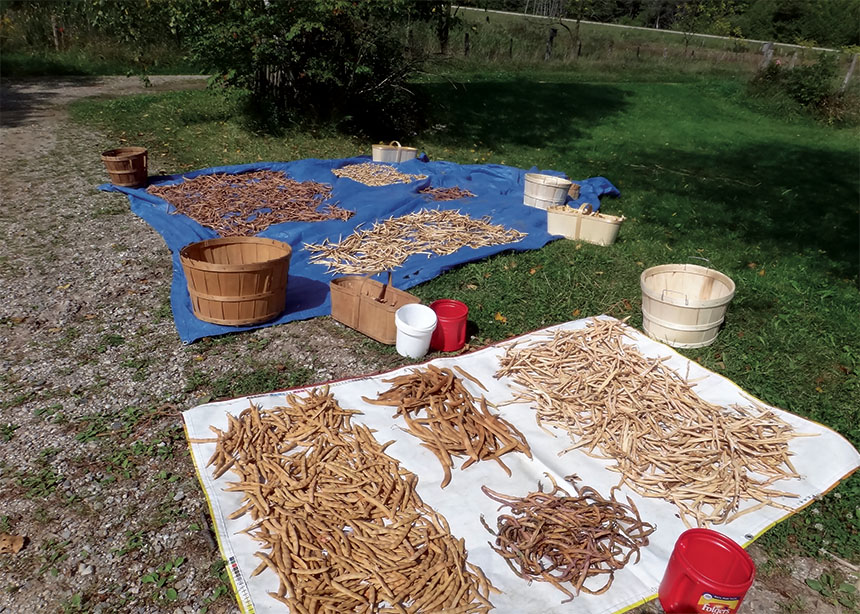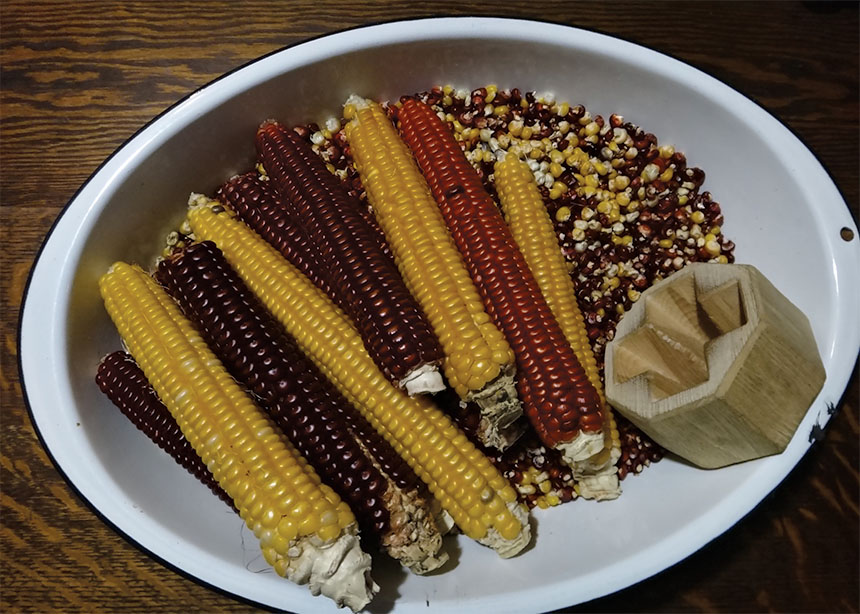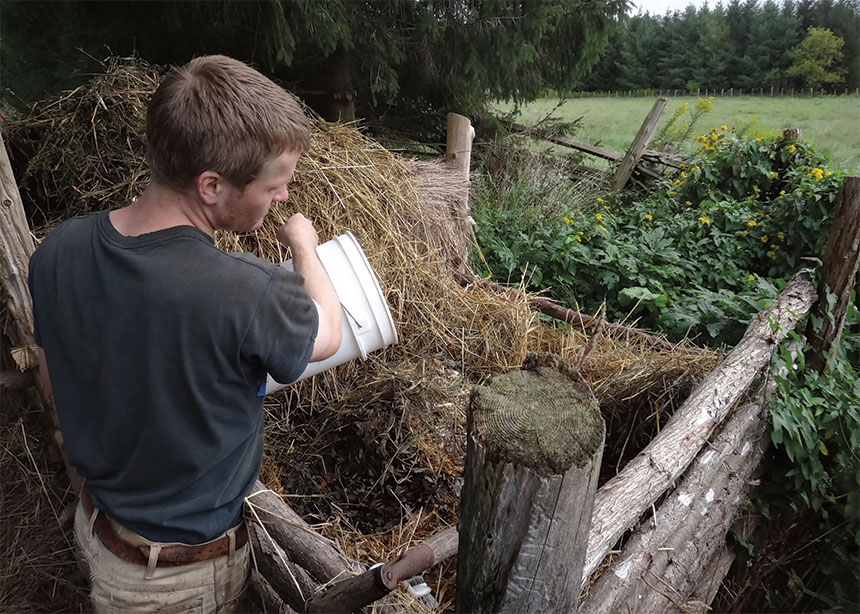My memories of high school are largely a featureless blur—I did graduate 40 years ago—but one incident that stands out in detail is a lecture in my vocational agriculture class. Mr. Upp drew an illustration of nutrient cycling on the chalkboard, complete with stick-figure cows. His point was that the talk of organic agriculture relying on animal manure and nitrogen fixation by legumes could not work because farming produces food to sell off the farm and selling food means selling nutrients.
Without replacing the nutrients, soil would become depleted and food production would decrease rapidly. Farming that produces outputs requires inputs.
I found the point both compelling and troubling. I spent many of the intervening 40 years working in food production, with a perpetually troubled idealism. The ideal was to feed people by working as a steward of Creation, but I often saw that we substituted smaller goals and justified wrong means. The result has been to harm Creation, which will make it harder for people to continue to eat.
For the past 12 years, our family has practiced small-scale, somewhat localized farming on 100 acres near Mildmay, Ontario. But in these last few years, my mind has been changing (or is it just clarifying?).
Farming the way we have is certainly not sustainable, and it is not the “best we can do,” as some people might suggest. I am coming to realize that all farming, big or small, conventional or organic (or regenerative), is dependent on mined resources, because it produces food which leaves its system.
What we need are not little changes but to actually change models and stop producing food to sell. This belief has put our family into the middle of a big change.
Linear vs. cyclical
A linear system uses up resources, such as fertilizers and fuels mined far away, and produces waste. In a system that cycles, we take nothing that we do not return. Produce stays on the farm and outside inputs are not used. The two systems are qualitatively different. We can’t say that something is “more sustainable”; it either is or it is not.
Mr. Upp was right in that our current food system is unimaginable if we don’t use mined resources. However, I would now disagree with his conclusion that we must keep using them.
If we can’t keep using mined resources, what can a sustainable food system look like? This question is not just for farmers. Since we all eat, this is for all of us.
First, we need to be clear that nutrients must cycle. In nature, nutrients tend to cycle in place. Trees produce leaves that become soil that feeds the trees. This natural cycling pattern also happens to some extent on farms. Traditionally, and in some cases still today, we actively cycle nutrients (feed) from the fields to livestock and back to the fields (as manure). However, this involves a lot of carrying (energy). Now that many livestock farms are separated from crop production, the carrying costs too much, and manure becomes a problematic waste. Where humans are separated from their food production, the same problem occurs—our manure becomes waste and the cycle gets broken.
Second, the energy used by our food system cannot rely on mined resources. In our family, we are taking first steps to use the strength of our bodies instead of fossil fuels or other linear options.
We have a new appreciation for the real energy cost of things. We can bike to church, but it costs us two to three hours, plus energy and risk. We can heat with wood, but since we saw and split wood by hand, each degree of warmth costs us. Experiencing in our bodies the cost of things changes what is practical or desirable. It also increases the awareness that if we don’t experience the cost in our bodies, the cost does not go away. Someone, somewhere, sometime always pays.
This has led us to conclude that our food system must be truly local in the sense that we can bear the carrying costs to cycle nutrients, without externalizing those costs by, for example, using fossil fuels.
Living an alternative
For many years, when we said that we grow a lot of our own food, we meant that we grow some of our own vegetables. We were suffering from what we came to call “staple blindness.” We hadn’t considered the carbohydrates and proteins that make up the core of our diet.
We are now experimenting with different foods to meet our carbohydrate needs. Using human energy, we have found grains like spelt, wheat and rye to be possible, but more demanding than corn and potatoes in terms of tillage, harvest and processing. Both grains and corn are easier to store long-term than potatoes, which also have more potential for catastrophic late blight. Other root vegetables, as well as squash and amaranth, also help meet our carbohydrate needs.
Bearing the true cost of growing grain makes us realize how expensive grain-based animal protein is. The cost includes the labour (energy cost), and also a consideration of how much land area is justly ours to use. Pigs and chickens eat the same kinds of things we do. Although they can also use feeds we won’t, we have always fed them some feed which we could eat.
Ruminants, such as cows, sheep and goats, can digest things we cannot—grass and other forages—but providing them feed in winter and carrying out their manure requires much work. They also produce methane, a greenhouse gas. Given all that, we are still debating the role of animal protein.
Legumes already meet a large part of our protein needs. Dry peas and beans are most important. Soys are well adapted and protein-rich, but not as enjoyable to eat. Runner beans and grass peas show promise here. We have also tried favas, lentils, cowpeas, chickpeas, peanuts, limas, adzuki beans, sweet lupin and tepary beans. While they can be grown, they don’t seem as well adapted to our climate.
At this point, we are using about 1.5 acres for our family’s plant-based needs, which make up most of our diet. We are also working on animal products, fats, oilseeds, sources of sugar, spices, herbs and vitamins. We are not sure what land area we will need for fiber, fuel and building materials as we seek to be sustainable in those areas.
Humanure
The less honoured part of a closed cycle system is our excrement, which we refer to as humanure. Most people in our culture are accustomed to flushing human “waste” away without a thought. Our family uses a simple bucket system with high-carbon cover material to gather humanure. We use a simple composting system to treat it.
Is it safe? Managed composting allows the pile to reach temperatures high enough to kill pathogens (145°F last week). Aging the compost and applying it at an appropriate point in our crop rotation provides an additional safeguard.
Is it distasteful? The user experience for a bucket toilet is quite similar to a flush toilet. Still, we do have buckets of humanure to handle. This is not glorious, but necessary, work: humbly helping humanure become humus. And it is not unfamiliar to anyone who has changed a baby’s diaper. It is good human work if done in love.
In all of this, what is the Christian element? Why should this be in Canadian Mennonite? We North Americans are using up the world in order to live in it, and requiring others to pay the cost of our needs and wants. We tell ourselves we have no choice. However, we followers of Jesus have made a choice, which we have only to live out. We have chosen to have the same mind that was in Christ Jesus. We have chosen not to grasp the privilege which could be ours, but to redeem Creation by voluntarily accepting hardship and suffering for the sake of love.
A common response to this difficult ideal is that no one can or will do it, and that it will make no difference unless everyone does. So who goes first? I think that, as Christians, we can.
Miles Wiederkehr, along with his wife, Ruth, and sons Theo and Andre, write for Canadian Mennonite every second month. They can be reached at rumithan@gmail.com.
To read Andre Wiederkehr’s accompanying article about biking his food 90 kilometres to university for a year, visit canadianmennonite.org/humans-humus.
Related article:
Humans and Humus











Leave a Reply
You must be logged in to post a comment.